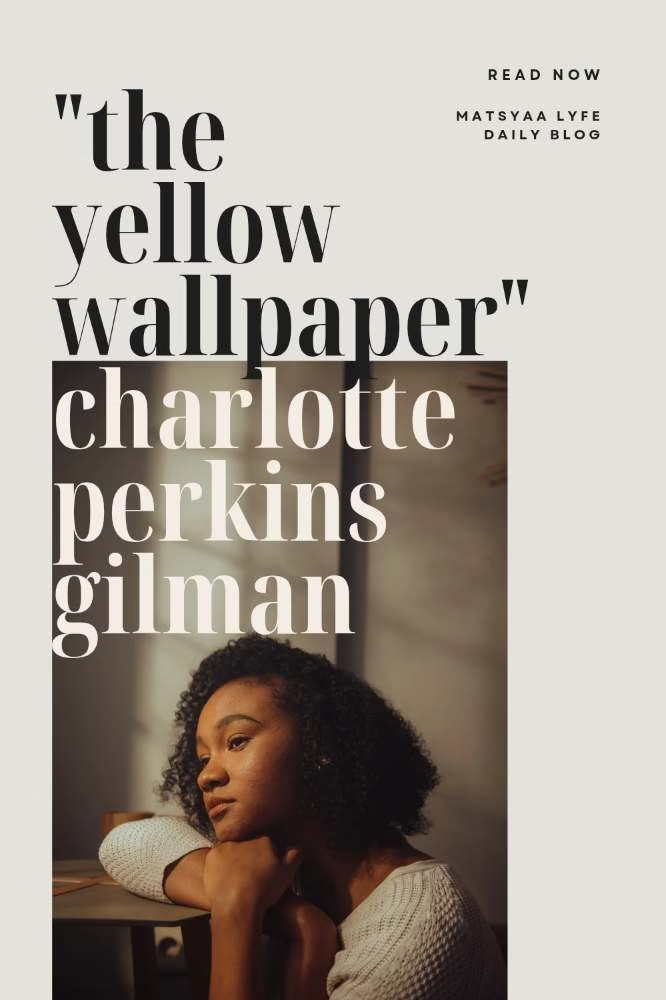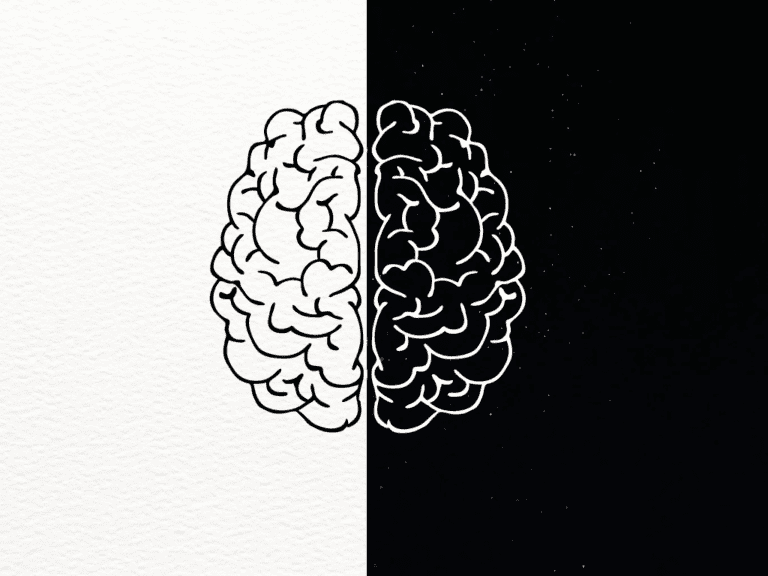Portraying Madness in The Yellow Wallpaper by Charlotte Perkins Gilman
Portraying Madness in The Yellow Wallpaper by Charlotte Perkins Gilman.
An article that touches the deepest core of the story
This is an article on how Charlotte Perkins Gilman has ended up portraying madness in The Yellow Wallpaper, one of her most popular and thought-provoking short stories.
The instant reference to the characters as being ordinary people, and those very ordinary people, as we consequently come to find, face a very extraordinary and unusual occurrence, getting an ancestral home for the summer that the narrator wants to readily attribute to being a haunted house.
The madness begins.

Table of Contents
Portraying Madness in The Yellow Wallpaper by Charlotte Perkins Gilman
What I aim for is to create a piece of content about the short story The Yellow Wallpaper, by Charlotte Perkins Gilman that’s not just going to briefly skim the story while overlooking important details. Instead, we are going to go down right to the deepest . You’ll understand it completely, you might even be motivated to give a lecture or two to your friends.
And, just so you know, what my professor in college who was going to teach me Romantic Literature, said, ChatGPT might be impressive for some, and could technically, give all these answers to you, but it won’t make you think, and it won’t make you grow, or get educated, for that matter. The choice obviously remains with you.
Let’s get on with our discussion, then.
The Yellow Wallpaper Analysis
The Yellow Wallpaper remains to be an artfully told masterpiece by the American author Charlotte Perkins Gilman. You can read a little background into the author and how the story as a whole relates to her own personal life.
The short story portrays mental illness from a time when it wasn’t as publicly talked about as it is now. The narrator, unnamed throughout the story, has a husband, John, sister-in-law, Mary, housekeeper, Jennie, the doctor. Her brother, a physician just like her husband, is in a role just to support the already overwhelming patriarchal rule of her husband that reigns her in.
Her husband, John, is someone who remains a looming presence over the narrator’s action throughout the story, policing her, making sure she never forgets how much of a help he’s really being to her. He is seen giving her all kinds of medicines from the very beginning, keeping a housekeeper to keeps tabs on every activity of the narrator, telling her she’s overreacting by giving so much importance to the yellow wallpaper in the room, or, God forbid, giving “way to her fancies”. Is any of this any less than the bars that the narrator finds on the wallpaper during midnight?
The narrator has these long monologues where she takes us in her trust and we can read into her mind, find the slow descent into insanity that slowly seems to become her natural state now. Let’s analyze the most important and influential quotes from The Yellow Wallpaper that ended up saying far more than what the words mean. From beginning to the end, let’s go!
Right from the very beginning, the narrator declares how she finds there’s something very queer about the wallpaper, its patterns, more specifically. When she asks her husband to change rooms, he doesn’t, because none of the other rooms in the house suit their requirements well. Besides, she needs air to get better, right? There’s nothing really wrong with her except from that. The story opens with her talking about a vacation that they’ve decided to go on. Why does she need a vacation, time away from home and her life back there? Her husband suspects something is wrong, or going to be wrong?
John is very careful with her. Like she’s a porcelain doll. He calls her a little girl, darling, so there’s a kind of…dynamic here with the narrator being a fragile little thing and her husband, her protector being someone who constantly has to keep an eye out for her to make sure she’s alright. See “hardly lets me stir without special direction.”
The narrator says “I never saw a worse paper in my life.” We’ll contrast this with the ending part where she feels almost a homely acceptance of the wallpaper, begins to find it appealing, even. That slow transformation is a huge symbol of one’s slow acceptance of madness and chaos that’s born within their own mind.
“One of those sprawling flamboyant patterns committing every artistic sin.” Poetic. But also…disturbing. Think of the mere fact that someone’s able to read so much into an assumingly simple wall pattern.
The narrator goes on to describe the wallpaper in detail. It’s dull so you’re not able to find the exact pattern, but at the same time it’s pronounced enough that someone would always want to stare harder at it and try to identify it. Contrasting. The metaphors used by Gilman to show us the pattern on the wall is truly remarkable. Designs committing suicide, the color a mixture between orange and yellow somewhere, all in all, something “dreadfully depressing”.
If you want to read some of the author background and understand why Charlotte Perkins Gilman wrote this story and what motivated her to write on this issue of women’s mental health and feminism.
The Yellow Wallpaper Themes
Madness
John, the husband, is practical, and something tells us that the narrator is not, and as we do come to see—she’s sick. Her medicines include phosphates and phosphites and tonics and journeys (to ancestral homes in summer), air and good exercise.
So I take phosphates or phosphites—whichever it is, and tonics, and journeys, and air, and exercise, and am absolutely forbidden to “work” until I am well again.
What is this “work” she’s talking about? Why is it in quotes? Is it something uncommon? Why isn’t she allowed to write? Why is Jennie always having and eye on her? Why do we never get to know the name of the narrator?
There was some legal trouble, I believe, something about the heirs and coheirs;
anyhow, the place has been empty for years.
That spoils my ghostliness, I am afraid, but I don’t care—there is something strange about the house—I can feel it.
See: “spoils my ghostliness” “something strange about the house” She controls herself in front of her husband to not become “unreasonably” angry with him.
John’s care—or control—is subtle. The tension in their marriage seems like tensions between just any couple, but will they be complicated more, further on?
The description of the wallpaper confuses the readers. Maybe it’s meant to. Maybe the whole point of this dull but pronounced description is to pull the reader in and make them acutely aware of how the narrator herself, just like them, is not actually fully able to comprehend exactly what she’s seeing. The color is revolting, we can deduce that from the description.
John is away all day, and even some nights when his cases are serious.
I am glad my case is not serious!
But these nervous troubles are dreadfully depressing.
“I am glad my case is not serious!” What does John do to cases that are serious? Detain them? Is detaining in a mental institution any different than being detained in a closed-off room (that could’ve been both a nursery and a gymnasium) with a dirty yellow wallpaper, with someone always keeping tabs on you?
What does a serious case mean? Surely, creeping around in your room and pretending you’ve just been freed from behind a wall, is serious enough!
The extended monologue of the narrator does not include John. What he represents, is all so far removed from the events and the thoughts of the reader now. He represents masculinity and patriarchy at one point, but he also represents the world of the sane, the normal, the oblivious, the almost self-centered, while the narrator represents the world of the nevous, the pedantic, the disturbed.
John doesn’t care to take the wallpaper off even if only for her sake. It’s called not giving into fancies.
Writing makes her tired, but she is writing, on a “dead paper”, as she so explicitly stated earlier.
I used to lie awake as a child and get more entertainment and terror out of blank walls and plain furniture than most children could find in a toy store.
Entertainment and terror both—opposites—derived from the same thing.
The narrator’s memory of childhood gives more insight into her tendency of seeing too much into stuff, things others didn’t see. She finds entertainment and terror in the same frame of childhood memories.
Mental Illness
A recurring theme in the short story is of mental illness.
How one is supposed to—or if one can even—break out from these barriers is one of the question addressed.
Feminism
Patriarchy has its bounds set on the narrator. The narrator in The Yellow Wallpaper can’t do anything without the disapproving eye of her husband John pointed on her. Her doctor forbids her from writing. This echoes the condition of women from a time when they weren’t allowed to write.
Aphra Behn was the first woman playwright to earn a living by writing. If you’re up for reading her play The Rover, I did a detailed post on it too, see it here. Like the women of her time, the narrator isn’t allowed to write, and so was the condition of Charlotte Perkins Gilman.
The age that doesn’t allow women to write also doesn’t want them to speak from their true selves. The narrator in the story is constantly afraid that John will catch her writing, or Jennie will snitch on her. It comes across, she’s more afraid of her own husband than she is of anyone else, or anything else, in the narrative.
Her own mind might seem constricting to us as readers, because we realize how harmful her thoughts come across as, but for the narrator, the yellow wallpaper and its weird pattern and ugly colors is what releases her from constraints. Tearing at the wallpaper is an act of rebellion, of tearing at the bars that imprison the woman inside.
And the fact that the woman is later identified as women, as pluralized, as generalized, shows how…it’s not just…her, but the whole womankind, or most of them, as they were, contained by society to follow particular norms, not speak up much, submit to their male protector.
Questions to Think Of
What does the yellow wallpaper symbolize?
What does the color yellow symbolize?





